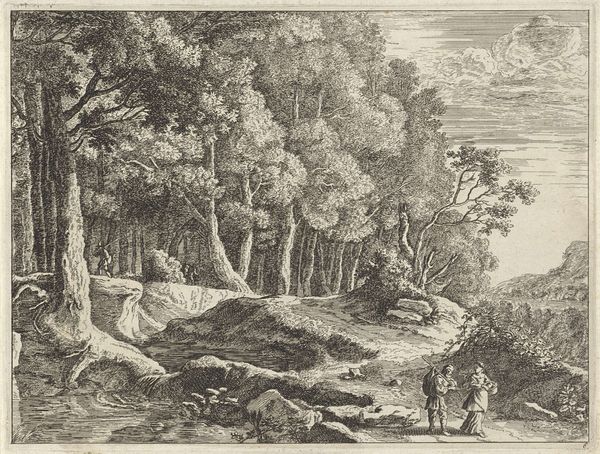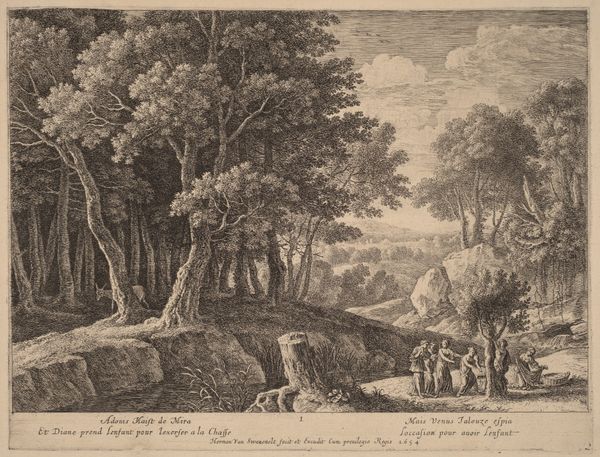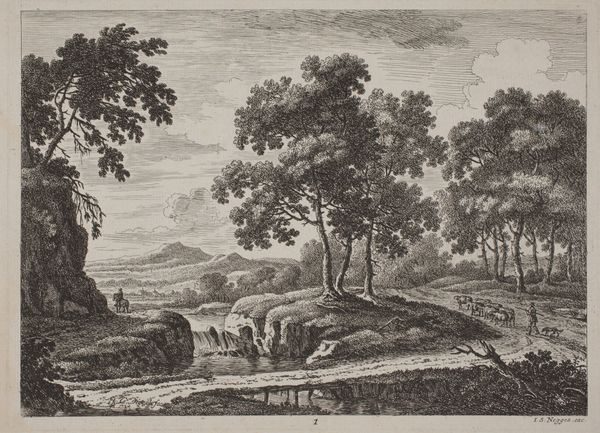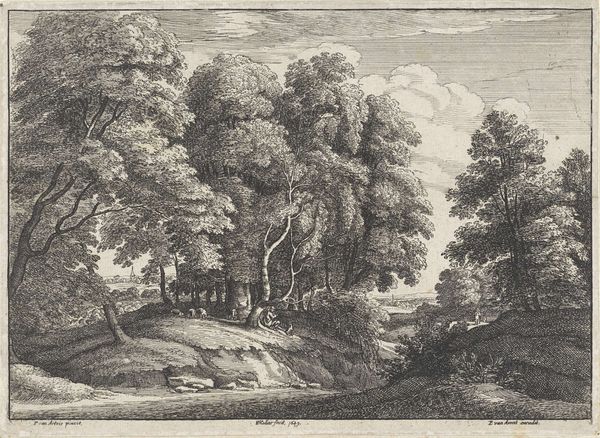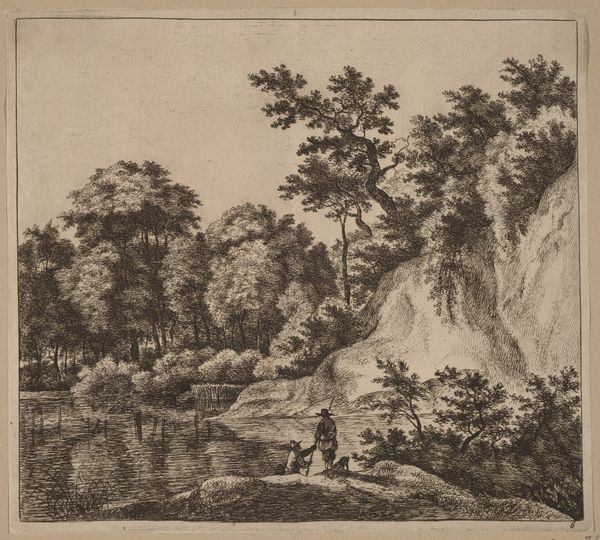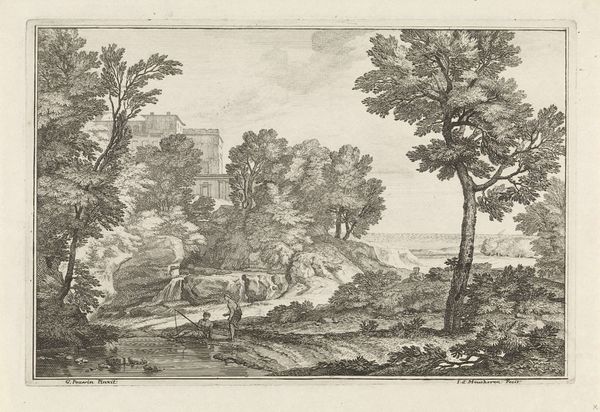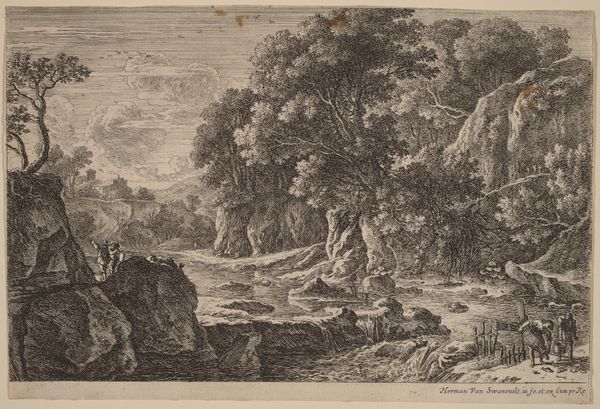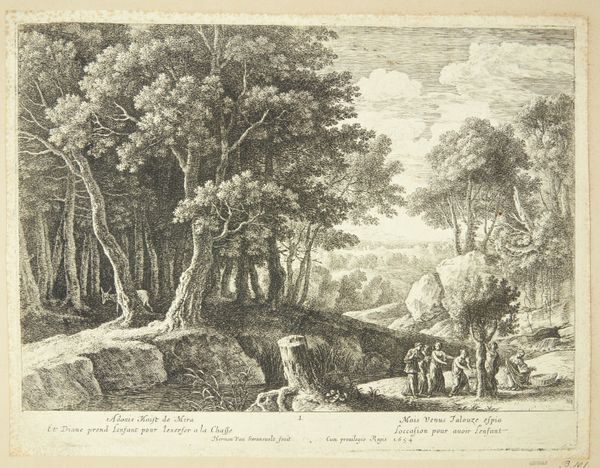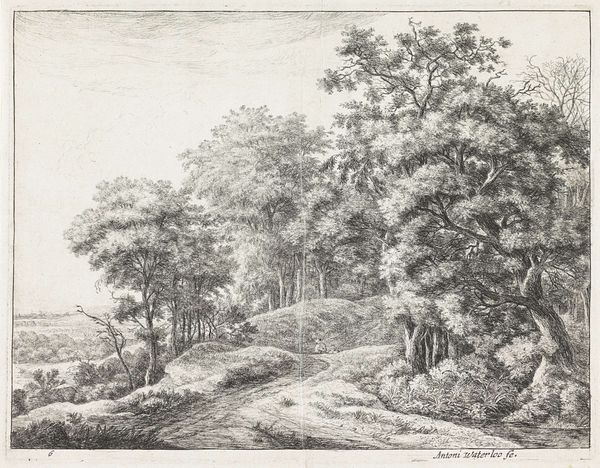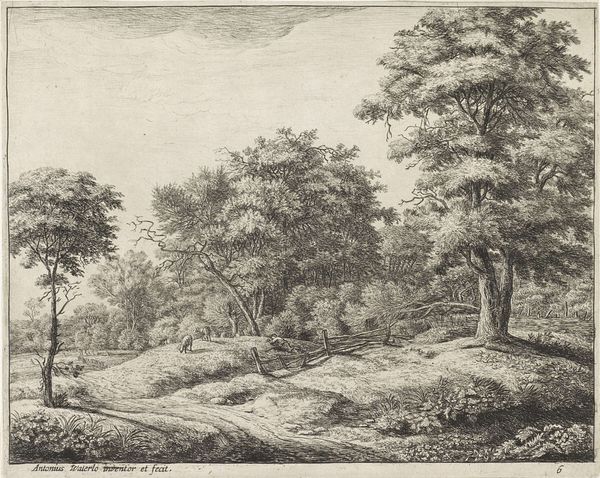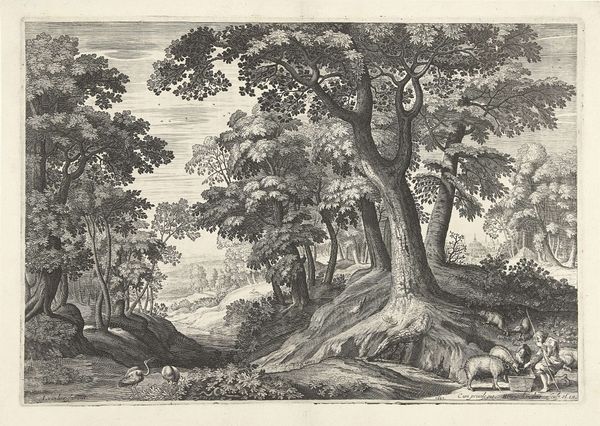
drawing, print, etching
#
drawing
#
baroque
# print
#
etching
#
landscape
Copyright: National Gallery of Art: CC0 1.0
Curator: The artwork before us is "Woods Bordered by a Stream," a print by Herman van Swanevelt. It's an etching, and quite detailed. What are your initial thoughts? Editor: It's interesting. My first impression is that despite its pastoral subject matter, there's a feeling of enclosure. The trees are rendered in such dense detail, they seem to press in, almost suffocating the figures. Curator: That feeling of enclosure aligns with how landscapes began to be utilized to express power relations within emerging European nations. The control and categorization of nature mirror sociopolitical control and the burgeoning sense of ownership of both land and its inhabitants. Editor: Yes, the two figures in the foreground, perhaps travelers, seem quite small and almost incidental against the imposing backdrop of the forest. It really draws attention to scale and perhaps human insignificance when faced with an overpowering natural landscape. The details – the meticulously rendered foliage, the way the light filters – it speaks to something more than just a scene. What was the context surrounding van Swanevelt’s creation of such imagery? Curator: Van Swanevelt, along with other Baroque artists, certainly had ties to the aristocracy and papacy, contributing to artistic expressions used by those figures. His work echoes a common sentiment that links natural order with established social hierarchies of the time. You’ve got an elite looking towards nature as a resource to validate its authority. The river bordering the woods may reflect an idealizing of land as capital for industrial and commercial means. Editor: I can see that. Considering that history and how Baroque artists generally deployed themes, this almost feels like propaganda couched in visual splendor. What I am left to wonder about is who this artist imagined as his viewers. And in what settings and circumstances? Were these pastoral scenes meant as encouragement of harmony or, as you propose, as a sign of power, to set some on a course for industrial means? Curator: I think both interpretations carry validity! Considering how art shapes the public sphere, we must recognize the power dynamics present even in the apparently innocuous depictions of nature. Art seldom exists in a vacuum. Editor: Very well said. This brief observation reveals so many ways imagery participates in a dance of power! Curator: Indeed. It prompts consideration of how we, even today, understand representations of the environment in shaping policy.
Comments
No comments
Be the first to comment and join the conversation on the ultimate creative platform.
